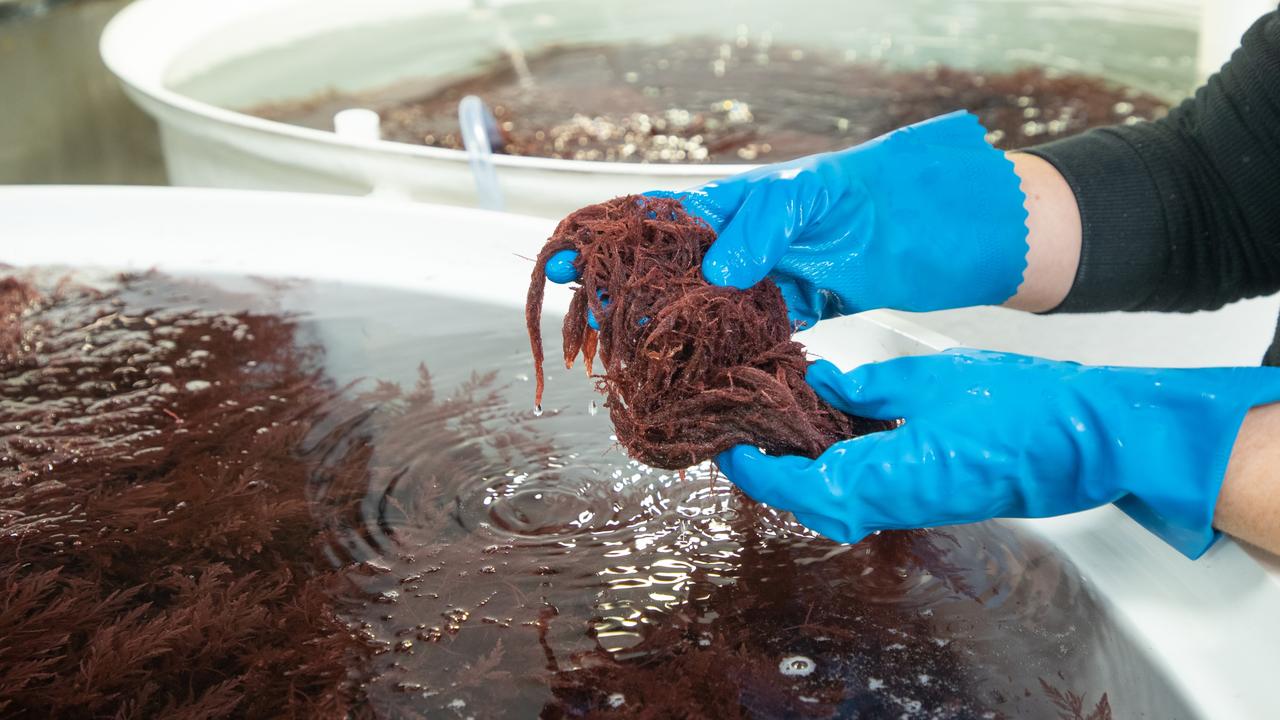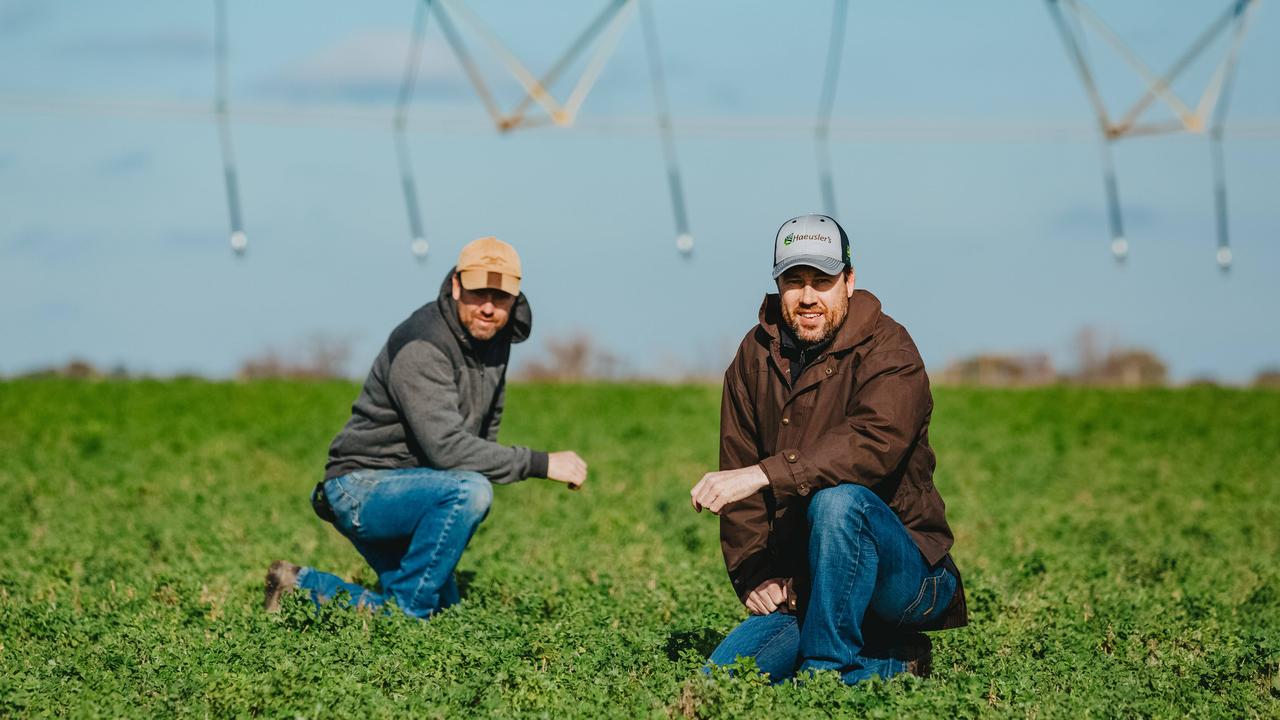Victoria’s hottest spots for lifestyle farms revealed
Prices in this Murray River region rival lifestyle properties near Melbourne. Find out exactly where small farm sales are booming, and where you can snap up a bargain.
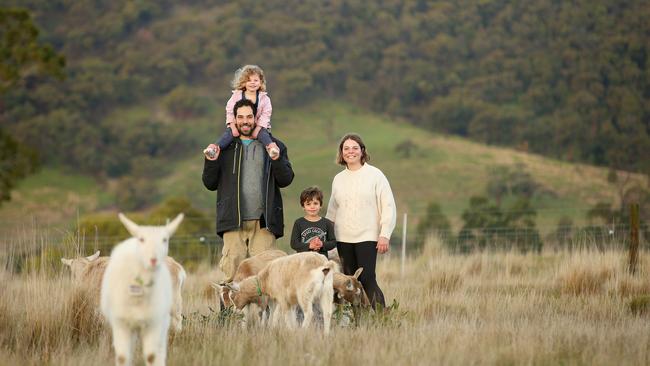
RURAL life has never looked more attractive.
Offering social distance in spades; plenty of space to grow produce and the opportunity to earn an income from an agricultural enterprise, it’s no wonder small farms are in demand.
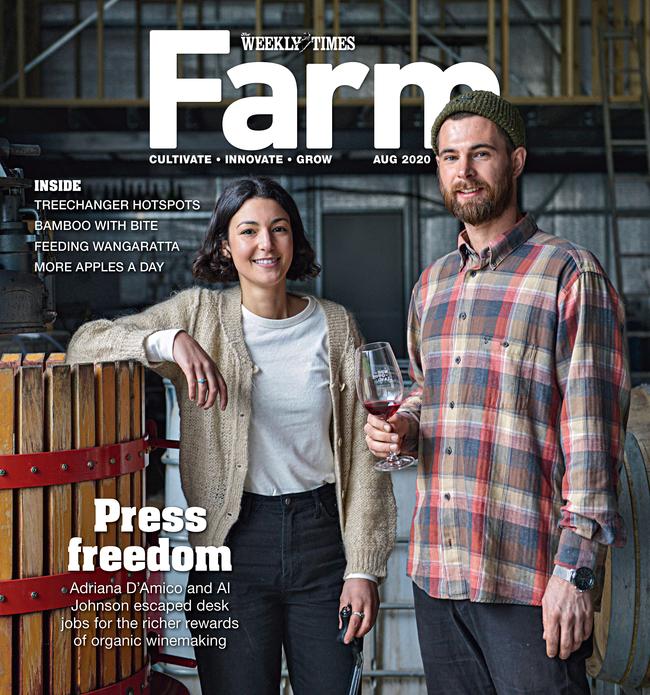
This exclusive report reveals Victoria’s most expensive small-farm regions are clustered around Melbourne, with the exception of one rural Murray River location, while the southwest and northeast of the state are experiencing strong volume and price growth.
Data compiled by Digital Agriculture Services shows small farm sales have remained steady year on year, with 2476 small farms sold in Victoria in 2018 and 2444 in 2019. Sales in the first quarter of 2020 are well up on the same period in 2018 and 2019, signalling a potential surge.
SMALL FARM SALES IN VICTORIA
NUMBER OF SALES, 10-100 HECTARES
2018
Jan-Apr: 621
Total: 2476
Median price per hectare (2017-18): $8488
2019
Jan-Apr: 709
Total: 2444
Median price per hectare (2018-19): $8651
2020
Jan-Apr: 941
Median price per hectare (2019-20): $10,319*
*provisional median, some sales data yet to be recorded. Source: Digital Agriculture Services
The pandemic, say real estate agents and analysts, will fuel sales growth and encourage a fresh wave of treechangers to venture out of urban centres for a new way of life.
Ex-corporate lawyer Sarah Ajzner and her husband, Daniel, made the move from Melbourne to the Macedon Ranges seven years ago. The mother of two runs Dreaming Goat Dairy on 20 hectares, selling gourmet cheeses at farmers’ markets.
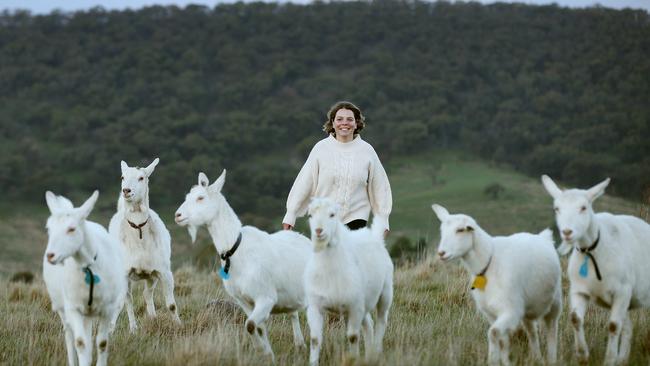
They chose the central region for its community feel, strong schools, established network of agritourism operators and easy commute to Melbourne – where Daniel works off farm.
“We had assumed lots of things we enjoyed about living in Melbourne would have to be sacrificed by moving to a regional area, but we actually found that all those opportunities that are available living in Melbourne are here as well,” Sarah says. “From the smallest things such as a really good coffee, to finding somewhere to do the exact style of yoga that I want to do.
“In the eight years we have been living here, those things have really expanded as well, and I think it has come with population growth in the area.”
>> THE TOP 10 LISTS: MOST EXPENSIVE, MOST AFFORDABLE, BIGGEST GROWTH
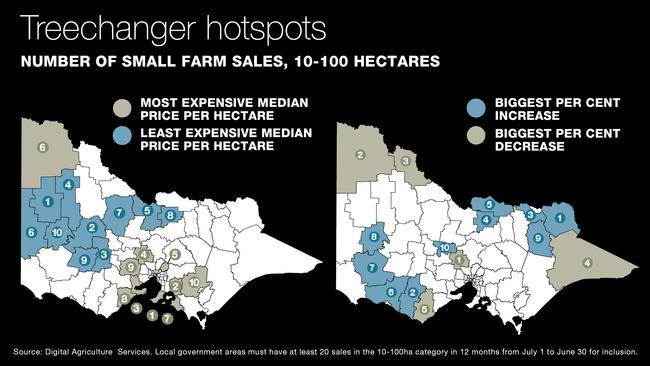
Sales data compiled by Digital Agriculture Services shows Macedon Ranges is the fourth most expensive region in the state for small acreage farms – a median $52,780 per hectare for properties 10-100 hectares – with prices up 11 per cent on 2018-19.
Macedon had just 34 small farm sales in 2019-20; a big drop from 50 the year before. Price escalation and tightly held land ownership may be behind the shrinking volume.
While Sarah says more far-flung regions such as Victoria’s North East and the Grampians are “stunning”, Macedon was particularly attractive because of its public transport link to the city.
Predictably, Victoria’s most expensive small farms can be found on the Mornington Peninsula, where median sale price is an obnoxious $3.85 million – or $170,913 per hectare. It’s shockingly steep, yet price per hectare is actually down more than 26 per cent on the previous year.
Treechangers may be turning instead to nearby Bass Coast or Baw Baw Shire.

Bass Coast gained 994 residents last year, and small farm prices surged more than 64 per cent to $34,846 per hectare. It’s Victoria’s seventh most expensive area with a median small farm price of $1.42 million, up 53.5 per cent year on year. Bass Coast prices have surpassed its western cousin – Surf Coast, where median price per hectare is up a mere 3.5 per cent to $30,038.
Baw Baw is Victoria’s 10th most expensive shire for small acreage, at $26,024 a hectare, down 11.7 per cent.
Mitchell and South Gippsland are also popular spots for buyers, each shire with more than 100 small farm sales a year. Both experienced shrinking volume in 2019-20, with 107 small holdings changing owners in Mitchell, down from 126 in 2018-19, and 132 selling in South Gippsland, down from the previous year’s 153.
One rural outlier matches the dizzying land values close to Melbourne.
Home to sun-drenched vineyards and citrus groves in northwest Victoria, Mildura is the sixth most expensive region for small farm sales, at $36,302 per hectare, up more than 15 per cent on last year.
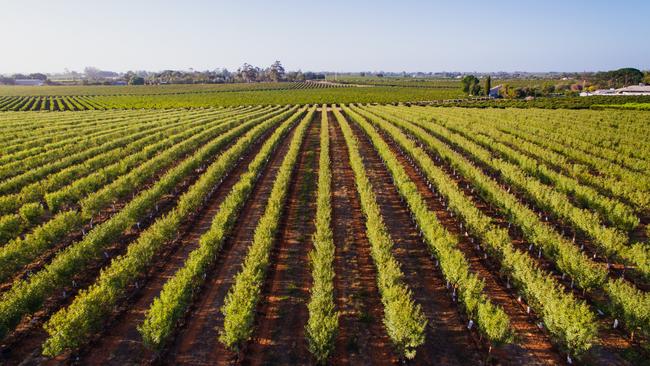
Digital Agriculture Services chief executive Anthony Wilmott says sales drivers in the small-acreage market are more complicated than for broadacre rural property.
“For large-scale properties, price is a function of the ability to produce income,” says Anthony, whose business compiles data about value, productivity and sustainability of every rural property sold in Australia.
“For small-scale farms, it is more about the amenities they provide, their locations, nearby communities, services.”
Landholders who want to increase aggregations or help family members join the rural property ladder can also drive demand for smaller acreage.
“We see big swings in the price of small farms often driven by those factors,” Anthony says.
He believes stronger transport links, internet connectivity and new remote working arrangements may give buyers confidence to look further afield.
“A great property with a great house with a great view is very much sought after,” Anthony says.
Corangamite Shire had an additional 57 sales of 10-100ha properties in 2019-20, for a total of 128, up more than 80 per cent year on year.
“Growth in demand in Victoria’s southwest is really a reflection of people’s desire to move to the country and people having to go further afield to get to those same facilities,” Anthony says.
Corangamite mayor Neil Trotter says he is not surprised by the sharp increase.
“We’ve been pretty active in pursuing people to move to the area. It has been a strategy of ours for quite some time,” says Neil, who lives in Timboon, near the popular Twelve Apostles tourism destination and the Great Ocean Road.
Despite the sales swell, the verdant dairy region lost 119 residents in 2019, its population down 0.7 per cent on the previous year, suggesting some small farms are being snapped up by current residents.

Neil says several strong northern cropping seasons have encouraged growers to invest further south, squeezing supply, but the region also has its fair share of boutique food producers, who boost local employment and tourism.
The Corangamite council has been actively encouraging subdivisions on town fringes to create lifestyle-size plots.
“We thought if there was demand for lifestyle properties perhaps we should be catering for it,” says Neil, explaining the shire frowns upon carving up productive agricultural land outside town boundaries.
DAS’s Anthony Wilmott stresses that sustainable management practices can make owning small farms more financially viable.
“There are real challenges in running a profitable, successful farm below 100 hectares, unless you are creating specialist products,” he says. “What we are seeing globally is that there is an increasing market for green bonds and sustainability metrics. We expect farmers will be able to get access to cheaper finance if they can demonstrate they are improving the sustainability of their rural property.”
In well-connected Benalla, southwest of Wangaratta, median price per hectare of small farms has gone up nearly 60 per cent year on year, to $16,900. Wangaratta real estate agent Garry Nash says if more small acreage properties came on the market in the region, they would shift like wild fire.
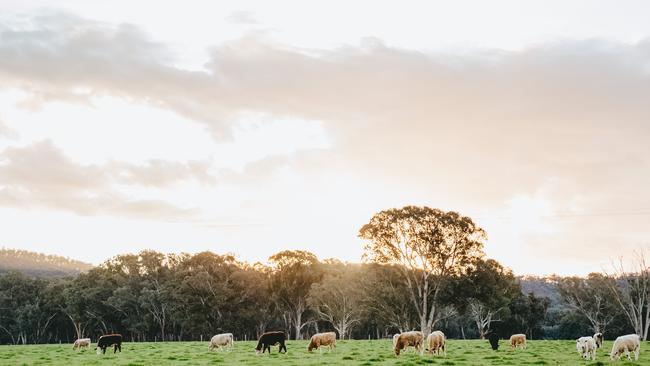
“Wangaratta ticks all the boxes,” Garry says. “From a tourist or sporting point of view, there are not too many locations that can offer you great aquatic opportunities at Lake Hume, Lake Mulwala, the King River Dam, then you step up to the alpine ski resorts, they are all within an hour’s reach.
“The pandemic, like in many things, is hastening the decision for people to say, ‘Hell’s bells, there is a better option to this, I can work from home, I only have to go to Melbourne once a month’.”
He says people should consider management responsibilities before buying – “they do have an obligation to keep it fire safe, the boundaries weed free” – but there are ways to ease into farm ownership.
“Agist it out, lease it out, sharefarm it – we can do all sorts of things so people don’t have to be worried about stepping up to a parcel like that,” Garry says.
Dreaming Goat Dairy’s Sarah Ajzner says people should try farm life before they invest.
“I really think people should experience it for a sustained period of time before making that commitment,” Sarah says.
“It sounds very romantic being a goat farmer and a cheesemaker, but 90 per cent of my job is cleaning, maintenance and packaging.”
TREECHANGER HOTSPOTS
SMALL FARM SALES, 10-100 HECTARES
MOST EXPENSIVE MEDIAN PRICE PER HECTARE
1. Mornington Peninsula
2019-20: $170,914
2018-19: $232,868
Per cent change: -26.6%
2. Cardinia
2019-20: $86,908
2018-19: $65,610
Per cent change: 32.5%
3. Greater Geelong
2019-20: $68,654
2018-19: $71,046
Per cent change: -3.4%
4. Macedon Ranges
2019-20: $52,781
2018-19: $47,284
Per cent change: 11.6%
5. Nillumbik
2019-20: $38,575
2018-19: $50,316
Per cent change: -23.3%
6. Mildura
2019-20: $36,303
2018-19: $31,530
Per cent change: 15.1%
7. Bass Coast
2019-20: $34,847
2018-19: $21,149
Per cent change: 64.8%
8. Surf Coast
2019-20: $30,038
2018-19: $29,028
Per cent change: 3.5%
9. Moorabool
2019-20: $28,824
2018-19: $33,848
Per cent change: -14.8%
10. Baw Baw
2019-20: $26,024
2018-19: $29,458
Per cent change: -11.7%
SMALL FARM SALES, 10-100 HECTARES
MOST AFFORDABLE MEDIAN PRICE PER HECTARE
1. Hindmarsh
2019-20: $4664
2018-19: $5497
Per cent change: -15.2%
2. Northern Grampians
2019-20: $5943
2018-19: $6178
Per cent change: -3.8%
3. Pyrenees
2019-20: $7219
2018-19: $6390
Per cent change: 13.0%
4. Yarriambiack
2019-20: $7659
2018-19: $14,023
Per cent change: -45.4%
5. Campaspe
2019-20: $7917
2018-19: $8889
Per cent change: -10.9%
6. West Wimmera
2019-20: $8009
2018-19: $6482
Per cent change: 23.6%
7. Loddon
2019-20: $8190
2018-19: $9807
Per cent change: -16.5%
8. Greater Shepparton
2019-20: $8262
2018-19: $6823
Per cent change: 21.1%
9. Ararat
2019-20: $9104
2018-19: $7581
Per cent change: 20.1%
10. Horsham
2019-20: $9136
2018-19: $8546
Per cent change: 6.9%
NUMBER OF SMALL FARM SALES, 10-100 HECTARES
BIGGEST PER CENT INCREASE
1. Towong
2019-20: 31
2018-19: 16
Year-on-year change: 15
Per cent change: 93.8%
2. Corangamite
2019-20: 128
2018-19: 71
Year-on-year change: 57
Per cent change: 80.3%
3. Indigo
2019-20: 44
2018-19: 29
Year-on-year change: 15
Per cent change: 51.7%
4. Greater Shepparton
2019-20: 46
2018-19: 31
Year-on-year change: 15
Per cent change: 48.4%
5. Moira
2019-20: 129
2018-19: 90
Year-on-year change: 39
Per cent change: 43.3%
6. Moyne
2019-20: 53
2018-19: 37
Year-on-year gain: 16
Per cent change: 43.2%
7. Southern Grampians
2019-20: 41
2018-19: 29
Year-on-year change: 12
Per cent change: 41.4%
8. Horsham
2019-20: 56
2018-19: 40
Year-on-year change: 16
Per cent change: 40.0%
9. Alpine
2019-20: 87
2018-19: 68
Year-on-year change: 19
Per cent change: 27.9%
10. Mount Alexander
2019-20: 37
2018-19: 29
Year-on-year change: 8
Per cent change: 27.6%
NUMBER OF SMALL FARM SALES, 10-100 HECTARES
BIGGEST PER CENT DECREASE
1. Macedon Ranges
2019-20: 34
2018-19: 50
Year-on-year change: -16
Per cent change: -32.0%
2. Mildura
2019-20: 21
2018-19: 30
Year-on-year change: -9
Per cent change: -30.0%
3. Swan Hill
2019-20: 27
2018-19: 37
Year-on-year change: -10
Per cent change: -27.0%
4. East Gippsland
2019-20: 67
2018-19: 85
Year-on-year change: -18
Per cent change: -21.2%
5. Colac-Otway
2019-20: 81
2018-19: 102
Year-on-year change: -21
Per cent change: -20.6%
Source: Digital Agriculture Services. Local government areas must have at least 20 sales in the 10-100ha category in 12 months from July 1 to June 30 for inclusion.
MORE
WANGARATTA: ORGANIC VEGIES A HIT IN THE NORTH EAST

